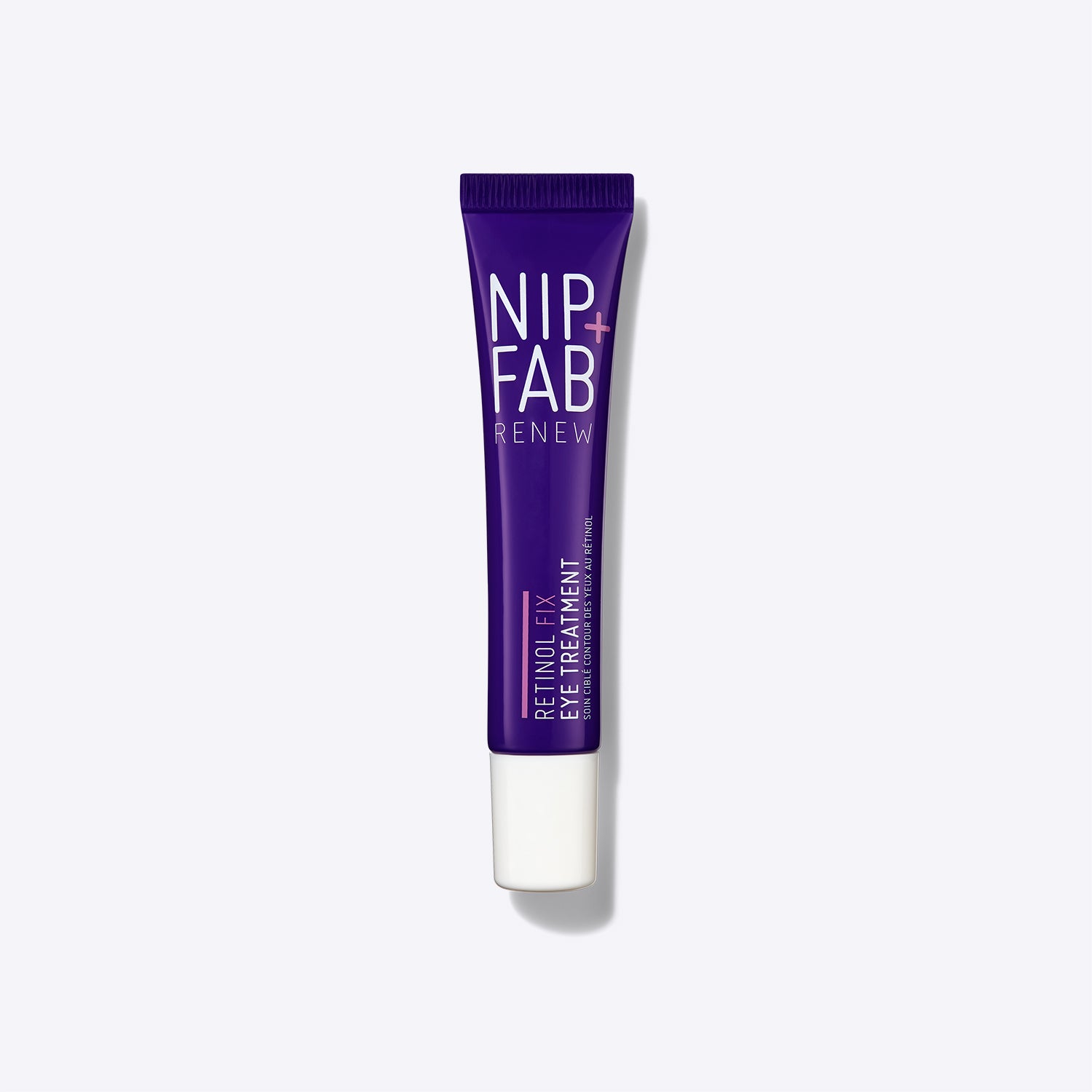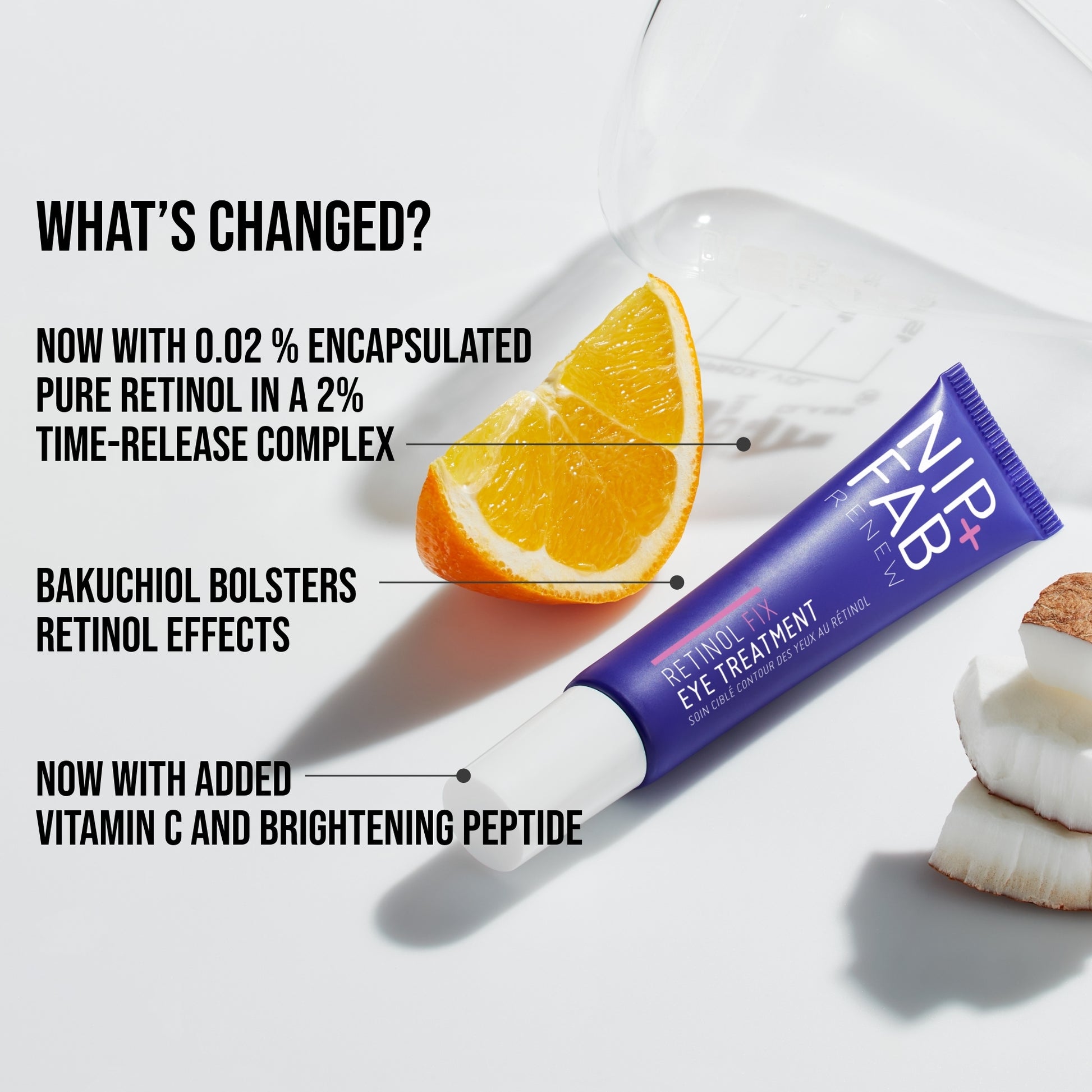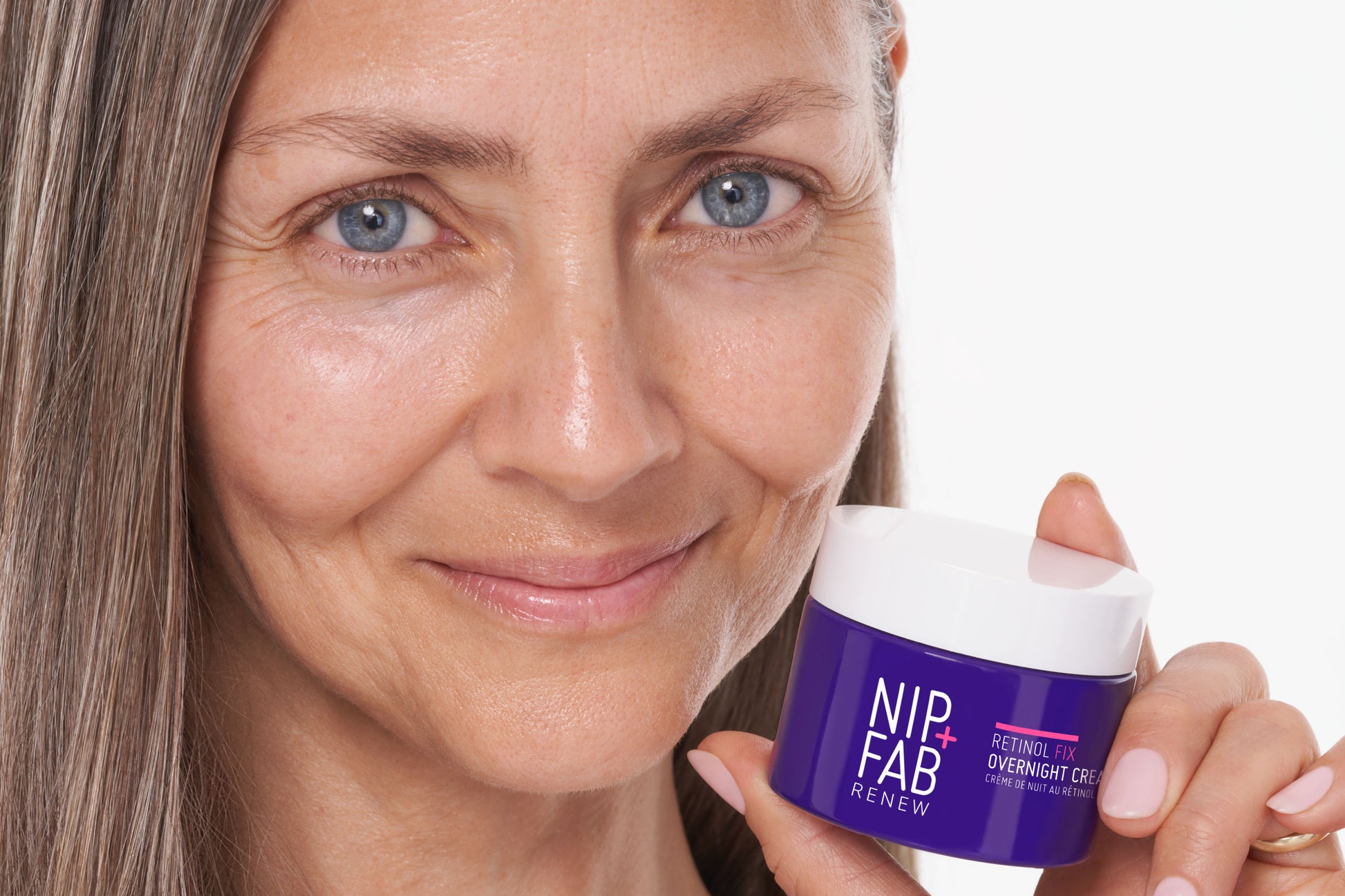


Do you retinol? It’s one of the most asked questions in beauty, particularly if you’re of a certain age (read: over 30). Known for its ability to increase cell turnover – reducing pigmentation, scarring and even acne (when used in its prescription form) – as well as boost collagen production, it really is the do-all of beauty. But retinol sometimes gets a bad rap – skin irritation, confusion about its different forms and what they do, when to start using it… the list goes on. Whether you’re au fait with your vitamin A or not, this guide will take you through what retinol is, what it does and when you should start using it.
What is retinol?
Put simply, retinol is a derivative of vitamin A. It’s known as an ‘active’ (you can read more about active skincare here) and is a type of retinoid but is often used a catch-all term for all retinoids.
There are four main types of retinoid: retinyl esters, retinol, retinaldehyde and retinoic acid. The first three can be brought in over-the-counter skincare products (like Nip + Fab’s), while retinoic acid – the most potent and active form – is only available in prescription form. And here’s the science: retinyl esters, retinol and retinaldehyde all need to convert to retinoic acid first in order to work effectively on your skin. And the more steps it takes to convert, the weaker – and therefore gentler – it will be.
What does retinol do?
Vitamin A cannot be made by our bodies, so we have to supply it in our diet and topically via skincare. In skincare, retinoids work at a deep cellular level to speed up cell turnover, which means that younger, fresher cells can work their way up through the skin to the surface quicker than they would naturally. This has myriad benefits: it can reduce pigmentation (like sun spots), dark circles, scarring (such as from old blemishes), as well as help smooth fine lines and wrinkles. There are also studies which have found retinoids to be really effective in treating acne and helping to reduce active breakouts, as well as in regulating sebum production.
The science of retinol
As we’ve mentioned, any retinoid must convert to retinoic acid before skin can reap its benefits. Pure retinoic acid can only be prescribed because it’s so potent: the retinol you get in over-the-counter skincare products must be converted over several steps before turning to retinoic acid, which means it takes a bit of time and patience to start seeing the benefits.
As you may have seen (and perhaps the whole reason you’ve landed on this blog post), we’ve recently reformulated our entire Retinol Fix range, and this is the bit where we can explain what we’ve done to reduce the number of steps it takes our retinol to convert to retinoic acid, to make our formula even more effective.
In our old formula, we used a blend of retinol and retinyl palmitate (a retinyl ester). While it was an effective formula, it took more steps to convert to retinoic acid, which meant it was taking you longer to see results. Now, we’ve switched to using encapsulated retinol. Retinol is 20% more potent that retinyl palmitate and takes just two steps to covert to retinoic acid, which means it’s not only more potent, but you’ll see results quicker, too. You can read all about the innovative encapsulation techniques we’ve used to stabilise the formula and provide a next-generation slow-release process here.

The side effects of retinol
Because retinol is one of the most ‘active’ ingredients in skincare, it’s sometimes approached with fear and/or avoided altogether. It’s true that retinol can cause skin irritations like dryness and flaking – but only if you don’t prep your skin beforehand. When we say prep, we mean use hydration either side of using your retinol (so in a hydrating cleanser and moisturiser) and being careful to introduce it gradually – ideally starting once a week and building up your tolerance from there. This is another reason why we’ve used encapsulated retinol in our new formula: encapsulation controls the delivery to the skin and mitigates the irritation that can be caused by speeding up cell turnover.
Of course, not all skincare is for everyone. If you have very sensitive skin, retinol may just be too much for you. If this is the case, read on for what you can use instead that has very similar benefits.
When should I start using retinol?
Retinol is pretty much the first word in anti-ageing skincare. But at what point should you start to slot in ‘anti-agers’ to your skincare routine? At Nip + Fab, we are firm believers that age is just a number and that you should only do what feels right for you and your skin – and most importantly, what works. However, if we were to put a time on when is good to start using retinol, we’d say around your mid to late twenties, as this is the time when elastin and collagen production in the skin start to slow down. But pay attention to your skin: if you’re not seeing the tell-tale signs of reduced elastin and collagen, like fine lines around your eyes and mouth, then don’t feel pressured to start using retinol: start when you and your skin are ready, and if it’s right for your skin.
If you’re not ready to start, or if you can’t use retinol, vitamin C is a brilliant alternative – and skincare partner – to retinol. In short, vitamin C protects skin from harmful free radicals, which cause premature ageing in the skin, and its acidity encourages skin to regenerate, thus reducing pigmentation, scarring and fine lines. Read more about vitamin C and what it can do for your skin here.